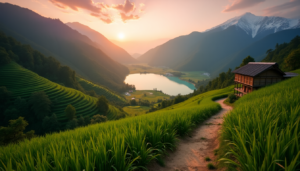Top Places to Visit in North East India
Uncover top places to visit in North East India! Explore secret destinations locals keep to themselves. Your ultimate 2025 guide to offbeat, must-visit spots awaits!
Kaziranga National Park stands as Northeast India’s most famous attraction and houses two-thirds of the world’s one-horned rhinoceros population. This UNESCO World Heritage site represents just the tip of the iceberg among North East India’s top destinations. Our exploration revealed that there was so much more beneath the surface.
The region holds countless hidden wonders beyond its prominent tourist spots. Cherrapunji and Mawsynram rank as Earth’s wettest places with over 450 inches of annual rainfall. Majuli, spanning 1,250 square kilometers, claims its place as the world’s largest river island. Travelers can best experience North East India from November through April. This window allows exploration of diverse attractions, from the 10,000-feet-high Tawang Monastery to the untouched Ziro Valley of Arunachal. The valley serves as home to the unique Apatani tribe that maintains its distinctive culture.
Secret Valleys and Lakes Only Locals Know
The Eastern Himalayas hide pristine alpine lakes and secret valleys that few travelers ever find. Local people knowledge passed down through generations reveals these natural wonders that showcase Northeast India’s untouched beauty.
Hidden Alpine Lakes of Arunachal Pradesh
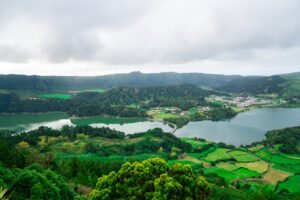
Sangetsar Lake sits quietly in Tawang district and engages visitors with its pristine blue waters and sweeping views of snow-capped peaks. The legendary Seven Lakes Trek near Anini shows a string of mystical water bodies, each with its own unique charm. Trekkers walk through thick forests of pine, oak, and rhododendron to reach heights above 13,000 feet. The local Idu Mishmi tribe calls these lakes sacred, which adds rich cultural meaning to their natural beauty.
Planning to visit Arunachal you can contact Northeast Treks – One of the best travel Agency in Guwahati, Assam.
Unexplored Valleys of Nagaland
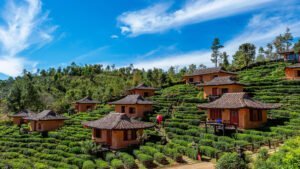
The Dzukou Valley stretches across Nagaland and Manipur’s border and covers roughly 30 square kilometers of untouched wilderness. The valley’s colors change with seasons – summer brings vibrant blooms that paint the landscape, and winter wraps it in a pristine white blanket. We found the rare Dzukou Lily here, a flower species that grows nowhere else in the world.
Planning to visit Nagaland you can contact Northeast Treks – One of the best travel agents for Nagaland in Guwahati, Assam.
Lesser-Known Water Bodies in Meghalaya
Meghalaya’s landscape has an amazing 13,332 water bodies, and 96% of them rest in rural areas. The state’s water features include 212 natural and 13,120 man-made bodies. The Umngot River near Dawki shows off crystal-clear waters that let you see the riverbed below, creating a magical sight. The Krang Suri Falls rewards brave adventurers who complete its rugged trek with turquoise waters that cascade into natural pools surrounded by green cliffs.

These water bodies serve many purposes – 72.4% help local fisheries thrive, while others keep the delicate ecological balance. These hidden treasures stay mostly untouched by mainstream tourism, keeping their pristine nature and cultural significance safe for future generations.
Planning to visit Meghalaya you can contact Northeast Treks – One of the best travel agents for Meghalaya in Guwahati, Assam.
Off-Grid Villages That Time Forgot
Remote corners of Northeast India hide ancient villages that preserve centuries-old traditions. These settlements give us a glimpse of lives untouched by modern influences and stand as living museums of indigenous culture and wisdom.
Ancient Tribal Settlements in Manipur
Andro village lies 23 kilometers from Imphal and guards remarkable cultural treasures. The village’s crown jewel, the ancient Panam Ningthou Temple, houses a sacred fire that has burned without pause since 34 BC. The village also keeps a unique pottery tradition alive. Only married women practice the traditional coil pottery technique, which passes down through generations.
Remote Mountain Communities in Sikkim
Among best Places to Visit in North East, Dzongu remains a pristine territory that the Teesta River and Kanchenjunga mountain range border in North Sikkim. Sacred homeland of the Lepcha people connects to Mayal Lyang – their mythical place of origin. Turquoise-colored glacial streams, cascading waterfalls, and natural hot springs dot this sparsely populated region.
Lingthem village sits high in Dzongu’s heart with spectacular views of Kanchenjunga. The settlement stands out for its eco-friendly practices, as Sikkim holds the honor of being the first organic state in India and the world. Local farmers grow cardamom plantations, maintain potato farms, and tend to paddy fields using traditional agricultural methods.
Traditional Village Life in Mizoram

Mizo villages worked as self-contained communities historically, with houses clustered on hilltops. The chief’s elongated hut stood at these settlements’ heart, surrounded by village elders’ dwellings. The Zawlbuk – a communal dormitory where young men gathered and slept – served as both a training ground and emergency response center.
The Mizo community runs on three fundamental principles:
- Tlawmngaihna: A philosophy of selfless service and community support
- Nghah lou dawr: A unique system of unmanned shops based on trust
- Hnatlang: Mandatory community participation in social activities
Fathers head these villages’ families and control property through a patrilineal system. The communities live by “sem sem dam dam, ei bil thi thi” – a philosophy that means “those who hoard will perish and those who share will live”.
Planning to visit Mizoram you can contact Northeast Treks – your best travel partner for Mizoram in Guwahati, Assam.
Sacred Sites Away From Tourist Trails
Northeast India has sacred spaces beyond its tourist spots that reveal stories of ancient spirituality and architectural excellence. These hidden religious sites give us a glimpse into the region’s rich cultural heritage.
Ancient Monastery Ruins
Among Places to Visit in North East, The Samten Yongcha Monastery, 400 years old, shows Buddhist architectural mastery. Local pilgrims know this ancient structure for its intricate wooden carvings and sacred Buddhist scriptures. The monastery’s remote location has helped keep its original character intact.
The Rumtek Monastery, built in the 9th century, stands as the largest and holiest Buddhist monastery in Northeast India. Its walls display rare artifacts and ancient designs that have lasted through centuries. This monastery sets standards for Indian Viharas’ architecture and design.
Forgotten Temple Complexes
The Narastan Temple sits in the Brariaangan Range with remarkable architectural features. This stone temple, built over 1,400 years ago, has unique characteristics:
- A circular shape with Gandhara-style architecture
- Trefoil arches on shrine walls
- A 70-feet square courtyard
- A rare ceiling-less interior compound
The Pala Dynasty built the Madan Kamdev temple complex between the 10th and 12th centuries. This complex plays a vital role in ancient Assam’s history. Archeological surveys found fortifications and water tanks that suggest an ancient city once stood here.
Holy Natural Formations

The Mawphlang Sacred Forest in Meghalaya shows nature’s spiritual importance. This well-laid-out site follows one strict rule – visitors cannot take anything, not even a leaf or pebble. Ancient monoliths stand in the forest where Khasi kings once held religious ceremonies.
Gurudongmar Lake, at 5,486 meters elevation, holds special meaning for Hindus, Sikhs, and Buddhists. The lake’s surroundings freeze in harsh winters, but one part stays unfrozen – people credit this to Guru Padmasambhava’s blessings.
Buddhist scripture, the Naysol Text, mentions 109 holy lakes in Sikkim under specific deities’ protection. Monks perform yearly purification ceremonies called ‘Tru-sol’ to keep these sacred water bodies pure.
The Khangchendzonga region has many holy natural elements, from caves to rivers that Sikkim’s indigenous people worship. These sacred landscapes blend naturally with local myths and create a unique spiritual geography that shapes regional beliefs today.
Hidden Trekking Routes Known to Tribes
Ancient tribal wisdom reveals Northeast India’s most extraordinary hiking paths. These age-old routes through dense forests and towering mountains tell stories of traditional life and survival.
Secret Forest Trails
The Talle Valley forest trails wind through India’s most pristine wilderness. Arunachal Pradesh’s land remains 80% forested. The Idu Mishmi tribe has managed to keep these paths alive. Their deep understanding of medicinal plants and eco-friendly practices spans generations.
The forest paths in Dibang Valley show a unique bond between nature and culture. The Mishmi tribes use these routes to gather medicinal herbs and perform sacred rituals. Hidden spots along these trails let locals pray to nature gods and leave traditional offerings of coins and flowers.
Unknown Mountain Passes
Mountain passes in Northeast India connect remote communities. The Sela Pass at 13,700 feet links Tawang with the rest of Arunachal Pradesh. Snow covers this pass in winter, making it available only from April to October.
These strategic mountain passages include:
- Diphu Pass: A vital tripoint that connects India, China, and Myanmar
- Pangsau Pass: At 3,727 feet, one of the easiest routes into Myanmar from Assam plains
- Bum La Pass: At 16,500 feet, needs special permits but offers stunning Eastern Himalayan views
Local Shepherd Paths
The Bhotia community shepherds keep centuries-old migration routes through the Himalayas alive. Traditional grazing permits from 1964 mark these paths that connect high-altitude summer pastures to winter grazing grounds. Notwithstanding that, these ancestral routes face modern challenges. Grazing fees have increased by a lot – from 1 rupee per sheep in 2011 to 8 rupees by 2021.
These shepherd trails do more than guide flocks. They help reduce forest fire risks as grazing animals clear dry grass. The movement of sheep and goats fertilizes the soil naturally and helps with weeding. The paths stretch from villages like Bagori at 9,000 feet down to lower areas where shepherds sell wool products in winter.
The Gaddi Trek shows these traditional routes at their best. It passes through many shepherd settlements and high-altitude pastures. The path gets tougher near glaciated trails and is a great way to get adventure and learn about local culture. These paths preserve ancient knowledge and help maintain the region’s ecological balance.
Planning to visit Mechuka you can contact Northeast Treks – One of the best travel agents for Arunachal Pradesh in Guwahati, Assam.
Underground Food Scene in Northeast India
Northeast India’s kitchens and age-old recipes tell fascinating stories of tradition and cultural heritage. Adventurous travelers can discover authentic flavors that families have preserved for generations in this lesser-known food scene.
Family-Run Local Eateries
Paradise Restaurant, Guwahati’s oldest fine dining establishment, brings authentic Assamese cuisine to life in an elegant setting. Their signature Parampara thali comes with fish tenga, pigeon curry, and khorisa – a mix of grated bamboo shoots fermented in water with red chillies and mustard oil.
Mising Kitchen draws pork lovers from everywhere with its famous O’Tenga Pork cooked with wood apples. The restaurant’s Pork Norshing uses curry leaves to capture authentic Assamese flavors.
Traditional Recipe Preservation
Northeast India’s food preservation methods show a deep bond between tradition and science. These techniques carry significant cultural value:
- They meet practical needs while keeping traditions alive
- Local communities preserve food for busy farming seasons
- Each method connects with the region’s ecological and spiritual life
The Bodo community has unique ways to preserve meat, fish, fruits, and vegetables – knowledge passed down through generations. These preserved foods develop distinct flavors and help sustain people during hectic seasonal work.
Secret Food Markets
Traditional markets in Northeast India hold a wealth of fresh vegetables and wild edibles. These markets serve as living museums of local produce and food culture. The region’s forests and farming background create ideal conditions for unique ingredients.
Kelli chana, Manipur’s beloved street food, got its name from an elderly woman who sold spicy chickpeas under a tree. People serve this dish on lotus leaves, showing the region’s creative take on street food.
The markets showcase specialties like Tungtap, a fermented fish dish loved by Meghalaya’s Khasi and Jaintia people. Local cooks sun-dry fish until it’s completely dry, grind it into fine powder, and then ferment it.
Rice remains at the heart of the region’s food identity. Arunachal Pradesh’s traditional Khaulam method cooks rice in bamboo hollows, adding a smoky flavor that makes both taste and aroma better.
Unexplored Natural Wonders
Northeast India’s remote corners hide nature’s most spectacular secrets. Pristine waterfalls, mysterious caves, and healing hot springs are waiting to be found. Local knowledge helps you reach these natural wonders that sit far away from regular tourist spots.
Hidden Waterfalls
Rongdong Falls in Arunachal Pradesh shows nature’s raw beauty from its place within dense forests near Tawang. Kshaid Falls in West Khasi Hills, Meghalaya creates peaceful scenes away from busy tourist areas.
Sati Falls in Assam’s Karbi Anglong district stays pure and untouched, while thick forest adds mystery to its surroundings. Lambok Falls in Nagaland’s Mon district shows off the region’s wild landscape and gives visitors a peek into the state’s natural heritage.
Undiscovered Caves
Meghalaya’s underground world holds amazing secrets. Since 1994, explorers have mapped only 5% of its total cave passages. They have found 1,100 caves and mapped 537.6 kilometers of passages.
Krem Nakama, a limestone cave in South Garo Hills, features:
- Large stalactite formations
- Narrow passages hidden under rocks
- Regular floods that bring forest vegetation
Siju Cave, also known as the Bat Cave, houses impressive stalagmites and has one of the world’s finest river passages. The cave’s highlight is without doubt the chamber named after Princess Diana that shows exceptional limestone formations.
Secret Hot Springs
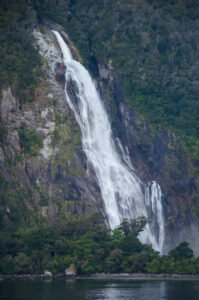 Of best Places to Visit in North East, Arunachal Pradesh, known as the ‘Land of Hot Springs,’ has thermal wonders spread across its 83,743 square kilometer area. The Tilam Hot Spring near Dong village draws people throughout the year. Its waters help cure skin problems.
Of best Places to Visit in North East, Arunachal Pradesh, known as the ‘Land of Hot Springs,’ has thermal wonders spread across its 83,743 square kilometer area. The Tilam Hot Spring near Dong village draws people throughout the year. Its waters help cure skin problems.
Sikkim’s Reshi Hot Spring stays between 40°C and 50°C. The sulfur-rich waters are known to heal various ailments. The Borong Hot Spring keeps its natural character with temperatures from 40°C to 45°C.
The Yumthang Hot Spring comes out of the earth at 40°C to 45°C and helps treat joint problems. These thermal springs work as natural healing centers. Their mineral-rich waters carry therapeutic properties that local knowledge has preserved through generations.
Local Festival Secrets and Timings
Northeast India’s cultural calendar brims with extraordinary celebrations that most visitors never hear about. These festivals align perfectly with natural cycles and ancient traditions. The region’s rich heritage comes alive through dance, music, and centuries-old customs.
Lesser-Known Tribal Celebrations
The Myoko Festival, which the Apatani tribe celebrates in March, brings friendship and prosperity to the community. This vibrant festival features several distinctive elements:
- Traditional chanting ceremonies
- Animal sacrifices based on ancient customs
- Prayer rituals that invoke protective spirits
- Community activities that strengthen social bonds
The Moatsu Mong Festival runs from May 1 to 3, bringing Nagaland’s communities together to clean wells and brew beer. The Aoling Festival marks spring’s arrival in early April. The once-feared Konyak tribe in Mon district celebrates this festival with great enthusiasm.
Seasonal Cultural Events: Among Places to Visit in Northeast
The Dwijing Festival runs for 12 days under the Hangrama Bridge along the Aie River. Local artisans showcase their handicrafts and folk performances . Visitors can enjoy paragliding and hot air balloon rides alongside traditional games and ethnic food stalls.
The Karbi Youth Festival, which started in 1974, ranks among India’s oldest ethnic youth celebrations. Indigenous tribal rituals like Ronger and Botor Kekur mark its beginning. The Basar Confluence in Arunachal Pradesh brings together 32 Galo villages. This festival stays true to its traditional roots and limits modern influences.
Private Community Gatherings
Naga tribes come together on February 15 to celebrate the Lui-ngai-ni festival with seed-sowing ceremonies. The Ambubachi Mela draws thousands to Kamakhya temple for three days. The temple closes during this time to honor the goddess’s annual menstrual cycle.
Buddhist communities celebrate the Losar Festival to mark the Tibetan New Year. The Monpa, Sherdukpens, Memba, Khamba, and Nah tribes participate in this three-day celebration. They prepare Guthuk, a special Tibetan noodle soup made with nine ingredients that symbolize good fortune.
The Garo tribe’s harvest celebration comes alive in the Wangala Festival, also known as the “100 Drums Festival”. Ten to twelve clans take turns performing and compete for prizes while honoring ancient customs. Tribal elders share traditional rice beer and meals in special huts built to mirror traditional Garo youth dormitories.
Insider Tips for Authentic Experiences
You need more than just knowing where to go to find authentic experiences in Northeast India – you just need to understand how and when to find these hidden treasures. Local communities have become skilled managers of their natural and cultural heritage through years of community-based conservation efforts.
Best Times for Hidden Kaziranga Spots
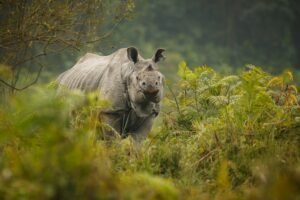
October to May provides the best conditions to find Northeast India’s hidden gems. The winter months from December through February bring crystal-clear views and comfortable temperatures that make remote locations perfect to visit.
Planning to visit Kaziranga and majuli you can contact Northeast Treks – One of the best travel agents for in Guwahati, Assam.
Amongst the best Places to Visit in North East, Wildlife lovers will find Kaziranga National Park and other sanctuaries most rewarding between November and April. Different regions need specific timing:
- April to June shines brightest in Meghalaya’s hidden spots with temperatures between 15 to 20 degrees Celsius
- May to July makes Nagaland’s remote areas most available, and temperatures reach 31 degrees
- Winter brings heavy snowfall to Sikkim’s secret locations where temperatures drop to 4-7 degrees Celsius
Local Transport Secrets
Local transport details can reshape your Northeast India experience. Guwahati acts as the main hub that connects all seven sister states.
The Sumo sharing system follows specific rules:
- No departures after 11 AM
- You must book tickets ahead
- Front seats give you the most comfort
- Early starts are vital for safety
You might face unexpected challenges – from sudden fog that delays you by 3 hours to landslides that force route changes. Building extra time into your schedule helps you find authentic experiences.

Community Connection Tips
Local communities deserve respect and understanding for their conservation efforts. They play an active role in protecting natural resources while creating environmentally responsible tourism.
Here’s how to create real experiences:
- Choose Local Accommodations: Pick locally-owned homestays and guesthouses that help tourism money flow straight to communities.
- Support Local Initiatives: Get involved with community-based conservation projects that earned special recognition in the 2018 India Biodiversity Awards.
- Respect Cultural Practices: Local customs will affect your experience. Many communities have sacred forests where you can’t take even a single leaf.
- Photography Etiquette: Be mindful when taking pictures and avoid reinforcing stereotypes.
- Language Connection: Basic greetings in local languages show respect and make deeper connections possible.
Community-based conservation’s soaring win in Northeast India depends on visitors taking part. These programs encourage environmentally responsible practices, including organic farming and agroforestry. Local communities have found new income sources while keeping their cultural heritage intact through these initiatives. Places to Visit in Northeast
Off-peak seasons offer the best cultural immersion. This timing reduces tourism’s effect on local communities and creates more genuine interactions. Supporting local artisans and craftspeople helps keep traditional skills alive and creates lasting income opportunities.
Local communities in Northeast India focus equally on keeping their access to natural resources and protecting ecosystems. Visitors can help both conservation efforts and community development by understanding and respecting these principles.
Conclusion
Of all the Places to Visit in Northeast India, it showcases nature’s grandeur and cultural richness in ways that go way beyond the reach and influence of typical expectations. Our exploration of hidden valleys, sacred sites, and ancient villages revealed a wealth of discoveries most travelers never encounter. Local communities protect these secrets that paint a picture of an untouched paradise perfect for mindful explorers.
Local wisdom runs deep in every aspect of life – seasonal celebrations and age-old trekking routes tell fascinating stories. Adventurous travelers should skip the tourist crowds at Kaziranga and head to places like the crystal-clear Umngot River or the mystical Seven Lakes Trek. These spots give visitors authentic experiences untouched by mass tourism.
Remote corners of Northeast India teach great lessons about green tourism and cultural preservation. Local communities managed to keep their traditions while adapting to change. They created a perfect balance between preservation and progress. Their soaring wins show how responsible tourism thrives without compromising cultural integrity.
Northeast India calls to adventurers who want genuine experiences beyond tourist hotspots. Hidden places to Visit in North East need extra effort and careful planning to reach, but pristine landscapes, ancient traditions, and warm hospitality make every challenge worth the journey.
FAQs
Q1. What are some hidden gems in Northeast India?
Some hidden gems in Northeast India include the crystal-clear Umngot River in Meghalaya, the Seven Lakes Trek in Arunachal Pradesh, and the ancient Andro village in Manipur. These lesser-known destinations offer pristine natural beauty and rich cultural experiences away from typical tourist routes.
Q2. When is the best time to visit Northeast India’s hidden spots?
The best time to visit Northeast India’s hidden spots is generally from October to May. Winter months (December to February) offer clear views and comfortable temperatures, while specific regions like Meghalaya are best visited between April and June for optimal weather conditions.
Q3. Are there any unique local festivals in Northeast India?
Yes, Northeast India has several unique local festivals. For example, the Myoko Festival celebrated by the Apatani tribe in March, the Moatsu Mong Festival in Nagaland from May 1-3, and the Wangala Festival (known as the “100 Drums Festival”) of the Garo tribe are lesser-known but culturally rich celebrations.
Q4. How can visitors experience authentic local culture in Northeast India?
To experience authentic local culture, visitors should stay in locally-owned accommodations, support community-based conservation projects, respect cultural practices, learn basic greetings in local languages, and travel during off-peak seasons. Engaging with local artisans and participating in traditional activities can also provide genuine cultural insights.
Q5. What are some unique culinary experiences in Northeast India?
Northeast India offers unique culinary experiences through family-run local eateries and secret food markets. Visitors can try dishes like O’Tenga Pork in Assam, Kelli chana street food in Manipur, and Tungtap (fermented fish) in Meghalaya. Many restaurants also serve traditional thalis featuring a variety of local specialties.

